
May 2020, Volume 1, Issue 4
Office of Elementary & Secondary Education
Office of State Grant and Program Support Newsletter

From the Deputy Assistant Secretary
Letter From Ruth Ryder, Deputy Assistant Secretary for the Office of State Grant and Program Support

Dear Partners and Stakeholders:
As we continue to adjust to these unprecedented times, the U.S. Department of Education (Department) remains focused on providing states and grantees with the support, flexibilities, and resources to navigate the challenges they are facing. Therefore, this edition of the newsletter highlights those flexibilities and resources. All states and entities applied for and received waivers related to assessment, accountability and reporting, as well as select fiscal requirements. These flexibilities will allow states and districts to focus on best meeting the needs of students and educators during the COVID-19 national emergency.
Our biggest initiative right now is implementing the Coronavirus Aid, Relief, and Economic Security (CARES) Act, which provided $30.75 billion for education stabilization funds. We are committed to getting much-needed funds in the hands of states and districts! Four grant programs were created through the CARES Act: Education Stabilization Fund Discretionary Grants; Governor’s Emergency Education Relief Fund; Elementary and Secondary School Emergency Relief Fund; and Higher Education Emergency Relief Fund. On April 23, Secretary Betsy DeVos announced that more than $13.2 billion in emergency relief funds were available to state and local education agencies to support continued learning for K–12 students impacted by the coronavirus. Find more information on the Elementary and Secondary School Education Relief Fund here: Elementary and Secondary School Education Relief Fund.
In addition to the efforts around the CARES Act, my staff is collaborating with colleagues across the Department to respond to your COVID-19 questions. Please continue to direct education related questions to COVID-19@ed.gov. Our team is working continuously to respond to questions received in the mailbox. As a result of this work, we have developed a number of resources that address commonly asked questions. Since the last edition of this newsletter, the Department has issued several Fact Sheets, including:
These Fact Sheets and other resources are available on the Department’s COVID-19 webpage: ed.gov/coronavirus. Please visit this page regularly as we continue to add new resources. For updated government-wide information, please visit Coronavirus.gov, CDC.gov/coronavirus, and USA.gov/coronavirus.
Throughout this newsletter you will find a variety of resources related to remote learning from our Office of Elementary and Secondary Education (OESE)-funded technical assistance centers, as well as from other ED-funded centers. In addition, we have extended deadlines for applications in several programs — see details below.
We recognize that you are making extraordinary efforts to ensure continuity of learning during this unprecedented national emergency. My office is committed to continuing to support you during this challenging time!
All the best –
Ruth Ryder
|

COVID-19 Resources for Educators

FERPA and Virtual Learning
ED’s Student Privacy Policy Office (SPPO) recently presented the webinar “Student Privacy — FERPA and Virtual Learning During COVID-19.” The webinar was conducted in response to the many questions SPPO has received about FERPA as educators and students shift to learning online during this time of social distancing. SPPO distilled most of the questions into 10 common scenarios and questions about FERPA. For each scenario, SPPO identified key FERPA requirements and takeaways and other questions to consider for best practices. The webinar, and other related materials, are posted on SPPO’s website.
|

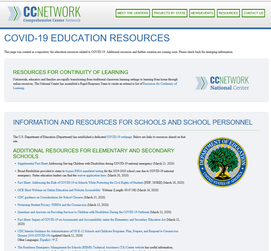
Resources From the Comprehensive Center Network
The Comprehensive Center Network assembled a rapid response team that has curated and posted a searchable list of more than 140 resources for continuity of learning. It also compiled collections of resources for online and offline use for educators and parents as part of its coordinated response to COVID-19. For more information, please visit https://compcenternetwork.org/.
Learn more about the Comprehensive Centers in this month's Office Spotlight.
|

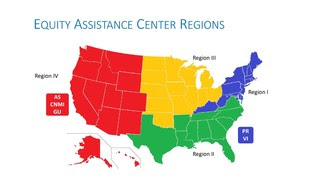
Equity Assistance Centers: COVID-19 Resources
Your regional Equity Assistance Center (EAC) can provide support in creating equitable education opportunities during the COVID-19 crisis. Below are examples of what's available from the four EAC regions:
- Region I website: Equity and Learning During COVID-19
- Region II free webinar series “Equitable Practices for Online Learning”
- Region III website: COVID-19 Pandemic Resources & Support
- Region IV website of COVID-19 resource topics, including resources listed by state
Learn more about EACs in this month's Office Spotlight.
|


Social and Emotional Growth: Four Resources to Support Students During the Pandemic
The Center on Positive Behavioral Interventions and Supports (PBIS), in partnership with the Center for Parent Information and Resources, has developed a set of resources for teachers and families to support their students and children in distance learning environments. The centers, funded by ED’s Office of Special Education Programs, created these resources to promote students’ social and emotional growth and to create safe, predictable, and positive education settings during the COVID-19 outbreak. The resources are posted on the PBIS website.
|

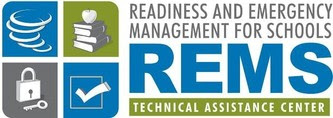
Readiness and Emergency Management Center
The Department’s Office of Safe and Supportive Schools and its Readiness and Emergency Management for Schools (REMS) Technical Assistance (TA) Center provide technical assistance for schools and school systems to continually build capacity before, during, and after possible emergencies. TA topics include school safety, security, emergency management, and preparedness, among others. The REMS TA Center’s COVID-19 website contains guidance, resources, training, and tools on COVID-19 and infectious disease planning. This site is updated on a regular basis in order to provide education agencies with the most current information. Users can access critical government websites via the page, as well as school-centered resources and information.
|


Office of Educational Technology’s Keep Calm and Connect All Students
The U.S. Department of Education’s Office of Educational Technology (OET) has launched a blog series, “Keep Calm and Connect All Students,” addressing the challenges students, families, teachers, school leaders, and states face as they shift to distance learning and digital resources during this health crisis. You can subscribe to updates here.
|


New Regional Educational Laboratory COVID-19 Resource Page
The Institute for Education Sciences and the Regional Education Laboratories (RELs) just released a new webpage that features evidence-based resources and guidance about teaching and learning in a remote environment. It also includes registration information for upcoming REL webinars for educators and practitioners. Click here to visit the REL program’s new COVID page.
|

Monthly Office Spotlight: Office of Program and Grantee Support Services
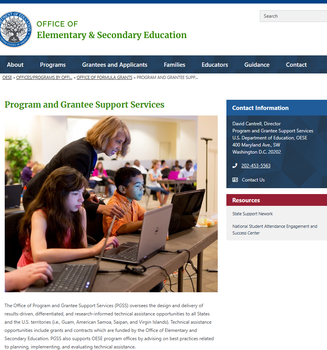
The Office of Program and Grantee Support Services (PGSS) oversees the design and delivery of results-driven, differentiated, and research informed technical assistance opportunities to all states and U.S. territories. PGSS also supports OESE program offices by advising on best practices related to planning, implementing, and evaluating technical assistance (TA). The PGSS TA portfolio includes the Comprehensive Centers Program, Equity Assistance Centers (EACs), the National Student Attendance, Engagement and Success Center (NSAESC), and the State Support Network.
The Comprehensive Centers Program is authorized by the Educational Technical Assistance Act of 2002. This program funds 20 Comprehensive Centers that provide capacity-building services to state educational agencies (SEAs), regional educational agencies, local educational agencies (LEAs), and schools to improve education outcomes for all students, close achievement gaps, and improve the quality of instruction.
The Equity Assistance Centers (EACs) are funded by the Department to provide technical assistance and training in the areas of race, sex, national origin, and religion to public school districts and other responsible governmental agencies to promote equitable education opportunities. The centers work in civil rights, equity, and school reform. This assistance helps schools and communities ensure that equitable educational opportunities are available and accessible for all children.
The National Student Attendance, Engagement, and Success Center (NSAESC) supports SEAs in identifying and implementing strategies to reduce chronic absenteeism. Approximately 36 states and the District of Columbia have included a chronic absence measure as a metric in their Every Student Succeeds Act (ESSA) accountability plans. The NSAESC is conducting needs-sensing activities and will provide responsive technical assistance services to help states and districts mitigate absenteeism and increase student engagement.
The State Support Network is a technical assistance initiative designed to support state and district school improvement efforts. The network brings states and districts together with technical assistance providers and subject matter experts to use research and resources to analyze practical challenges and develop strategies for supporting schools. Over the past four years, the State Support Network hosted numerous communities of practice and peer exchanges, provided individual support to state agencies, and developed tools and resources on such topics as financial transparency, data reporting, assessing needs, and identifying and implementing evidence-based practices for school improvement.
Visit the PGSS website to learn more about these programs.
|

Technical Assistance Resources and Updates
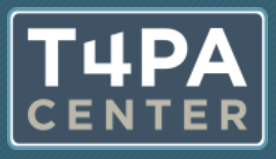
Announcing a New T4PA Center Website
The Title IV Part A Technical Assistance Center (T4PA Center) operates on behalf of the Department’s Office of Safe and Supportive Schools to provide SEAs with dedicated support for implementing the Title IV Part A (Title IV-A) Student Support and Academic Enrichment (SSAE) program. The T4PA Center provides SSAE state coordinators assistance across the program's diverse content areas, including promoting a well-rounded education, improving the safety and health of students, and supporting the effective use of technology. In partnership with ED, the T4PA Center works with state coordinators to identify grant implementation needs, develop a tailored plan to address these needs, and broker support to build capacity at the state and local levels to help ensure Title IV-A programmatic success.
The brand-new website for the T4PA Center includes
- a carousel of noteworthy news, easy-to-access menus of announcements of relevant resources and offerings, upcoming events, and spotlights on grant activities;
- a resource library with free, relevant and useful information;
- SEA profiles that give Title IV-A program information for each state, such as state coordinator contact information, funding data, links to state-sponsored Title IV-A websites, and more;
- a list of federal partners from different agencies, programs, and offices that focus on Title IV-A program-related work;
- a deep dive via a searchable statute to learn more about Title IV-A; and
- a password-protected section dedicated to only state coordinators that includes a community of practice, calendar, and resource-sharing area.
The T4PA Center website also features an online technical assistance request form for help with technical assistance.
|

|




















